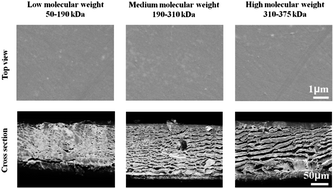Using surfaces to modulate the morphology and structure of attached cells – a case of cancer cells on chitosan membranes†
Abstract
This paper describes the development of physically and/or chemically modified

Maintenance work is planned for Wednesday 1st May 2024 from 9:00am to 11:00am (BST).
During this time, the performance of our website may be affected - searches may run slowly and some pages may be temporarily unavailable. If this happens, please try refreshing your web browser or try waiting two to three minutes before trying again.
We apologise for any inconvenience this might cause and thank you for your patience.
* Corresponding authors
a
Institute of Nanoengineering and Microsystems, National Tsing Hua University, No. 101, Section 2, Kuang-Fu Road, Hsinchu 30013, Taiwan
E-mail:
chaomin@mx.nthu.edu.tw (to C.-M. Cheng)
b Institute of Basic Medical Sciences, National Cheng Kung University, No. 1, University Road, Tainan 701, Taiwan
c Koch Institute for Integrative Cancer Research, Massachusetts Institute of Technology, 32 Vassar St., Cambridge, MA 02142, USA
d Department of Anesthesiology, Children's Hospital Boston, 300 Longwood Avenue, Boston, MA 02115, USA
e Department of Physical Medicine and Rehabilitation, National Taiwan University Hospital, No.7, Chung Shan S. Rd., Zhongzheng Dist., Taipei City 10002, Taiwan
This paper describes the development of physically and/or chemically modified

 Please wait while we load your content...
Something went wrong. Try again?
Please wait while we load your content...
Something went wrong. Try again?
H. Shuai, C. Yang, H. I. Harn, R. L. York, T. Liao, W. Chen, J. A. Yeh and C. Cheng, Chem. Sci., 2013, 4, 3058 DOI: 10.1039/C3SC50533B
To request permission to reproduce material from this article, please go to the Copyright Clearance Center request page.
If you are an author contributing to an RSC publication, you do not need to request permission provided correct acknowledgement is given.
If you are the author of this article, you do not need to request permission to reproduce figures and diagrams provided correct acknowledgement is given. If you want to reproduce the whole article in a third-party publication (excluding your thesis/dissertation for which permission is not required) please go to the Copyright Clearance Center request page.
Read more about how to correctly acknowledge RSC content.
 Fetching data from CrossRef.
Fetching data from CrossRef.
This may take some time to load.
Loading related content
